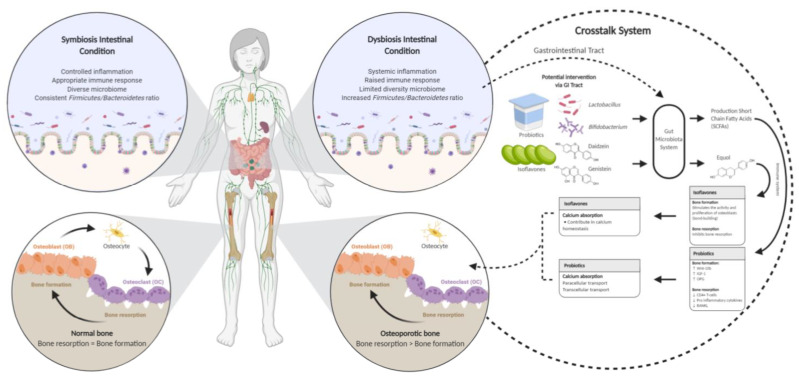Figure 2.
The crosstalk system mechanism of probiotics and isoflavones that benefits bone. An unhealthy balance in the microbiota community composition is linked to various metabolic, inflammatory, and immunologic diseases [32], and vice versa. The imbalance of the gut microbiome can cause the imbalance of osteogenesis and osteoclast reaction [33]. The gastrointestinal (GI) tract system contributes to absorbing bone mineralization [40]. The mechanism of action between probiotics and isoflavones regulates the GI tract system and calcium homeostasis. In the GI tract system, probiotics increase short-chain fatty acids [65] and elevate the immune system [55] to regulate the function of bone formation by increasing the level of Wnt Family Member 10B (Wnt10b), insulin-like growth factor 1 (IGF-1), and osteoprotegerin (OPG) [15] and lead the function of bone resorption by decreasing the level of CD4+ T cells, pro-inflammatory cytokines, and receptor activator of nuclear factor-κB ligand (RANKL) [15,54,55]. Furthermore, gut microbiota converts isoflavones (daidzein and genistein) to equol in the GI tract [63]. Isoflavones stimulate the activity and proliferation of osteoblasts [47] and inhibit bone resorption [26]. Isoflavones prevent bone resorption [58,59]. Isoflavones contribute to calcium homeostasis [70], and probiotic modulates the transcellular and paracellular pathways [46]. ↑: increase; ↓: decrease.

